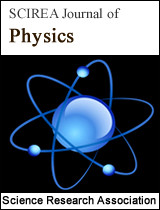Principles of a Gravitational Field Quantization
DOI: 333 Downloads 8589 Views
Author(s)
Abstract
The problems connected to propagation of a gravitational field are considered. The law of change of an electromagnetic radiation frequency in a gravitational field is shown. On the basis use of a quantum gravitational eikonal the energy of a single graviton is found. Refusal from a stresses tensor in structure of an energy-impulse tensor has allowed the quantum form of the energy-impulse tensor in Einstein's equation is found. It is shown that the solution of the Einstein’s equation for the certain direction in this case represents the sum of a gravitational wave and a graviton. It is noticed that the deep understanding of process of the gravitational waves with massive body interaction can be only at the quantum philosophy. It is shown that at approach of a graviton to the massive bodies (double stars) radiating gravitational waves there is a resonant pumping of the gravitational field energy of these bodies to the gravitons. It enables registration of the gravitons with the help of the detector located near to massive bodies.
Keywords
gravitational eikonal, metric tensor, Einstein's equation, energy flux, gravitational waves, energy-impulse tensor, registration of gravitons
Cite this paper
A.N. Volobuev,
Principles of a Gravitational Field Quantization
, SCIREA Journal of Physics.
Volume 4, Issue 2, April 2019 | PP. 17-35.
References
| [ 1 ] | Bronstein M.P. Quantization of Gravitational Waves. Moscow, JETP, No. 6, 1936, pp. 195 - 236. |
| [ 2 ] | Wheeler J.A. Geons. Phys. Rev. V. 97, 1955, pp. 511 – 536. |
| [ 3 ] | Kiefer C. Quantum Gravity. New York: Oxford Univ. Press, 2004. 308 p. |
| [ 4 ] | Rubakov V.A., Tinyakov P.G. Infrared – modified Gravities and Massive Gravitons. Moscow. Uspekhi Fizicheskikh Nauk. V. 178, No. 8, 2008, pp. 785 – 822. |
| [ 5 ] | Christian Corda. Interferometric Detection of Gravitational Waves: the Definitive Test for General Relativity. Int. J. of Modern Physics D. Vol. 18, No. 14, 2009, pp. 2275-2282. |
| [ 6 ] | Landau L.D., Lifshits E.M.. Theory of Field. Moscow: Science, 1967. 460 p. |
| [ 7 ] | Kaluza T. To Problem of Physics unity, The Collection: Albert Einstein and the Theory of Gravitation, Мoscow, World, 1979, pp. 529-534. |
| [ 8 ] | Kris Pardo, Maya Fishbach, Daniel E. Holz, David N. Spergel. Limits on the Number Spacetime Dimensions from GW170817. ArXiv.org 1801.08160v1, 24 Jan 2018, pp. 1-7. |
| [ 9 ] | Fradkin E.S. The Method of Green’s Function in the Theory of the Quantum Fields and Quantum Statistics, Moscow, Works FIAN, Science, V. 29, 1965, pp. 7-138. |
| [ 10 ] | Zeldovich J.B., Novikov I.D. The Theory of Gravitation and Evolution of Stars, Moscow, Science, 1971. 484 p. |
| [ 11 ] | Levich V.G., Vdovin J.A., Mjamlin V.A. Theoretic Physics Course. V. 2. Moscow: FIZMATGIS, 1962. 820 p. |
| [ 12 ] | Volobuev A.N. Basis of Nonsymmetrical Hydromechanics. New York. Published by Nova Science Publishers, Inc. 2012. 198 p. |
| [ 13 ] | Schlichting H. The Boundary Layer Theory. Moscow: Science, 1974, p. 63. |
| [ 14 ] | Mott N., Sneddon I. Wave Mechanics and its Applications. Moscow: ComKniga, 2007, p. 389. |
| [ 15 ] | Peters P.C., Mathews J. Gravitational Radiation from Point Masses in a Keplerian Orbit. Phys. Rev. V. 131, No. 1, 1963, pp. 435 – 440. |

